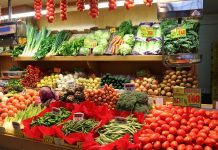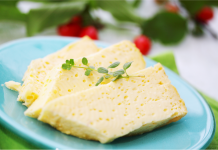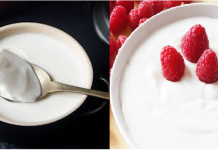It’s time to stop stereotyping when it comes to white foods. White foods like sugar, rice, bread, and noodles are generally unpopular because they are high in sugar and contain empty calories! They do raise the risk of diabetes, heart disease, and weight gain. But not all whites are bad, nor are they all created alike! Take a look at some “good” whites that help fight many diseases, and indeed are “must haves” in your daily diet.
Onion: Polyphenols, flavonoids called quercetin, and a non-digestible fibre called “inulin” are abundant in onions. Besides lowering sugar and cholesterol levels in the body, inulin is great for health because it cannot be digested in the intestine, but instead is fermented by the good bacteria. This, in turn, increases the count of beneficial bacteria and eliminates bad bacteria. Several servings of onion each week are sufficient to statistically lower your risk of some types of cancer. For colorectal, laryngeal, and ovarian cancer, half to one cup of onion has been shown to provide risk reduction. But while using the onion, one must take care not to peel off too much of the layer just below the skin, because that is where most of the inulin is.

Garlic: Garlic can lower blood pressure and triglyceride levels if used every day. Although garlic supplements can be used, nutritionists recommend fresh garlic for maximum benefits.

Barley: Barley is known to be a natural diuretic and helps relieve water retention in many conditions, including premenstrual syndrome, renal failure, heart disease and hypertension. It is also a rich source of fibre, minerals, vitamins, and inulin.

Cauliflower: This vegetable is an excellent source of Vitamin C, and provides many Phytonutrients which have antioxidant properties and help lower the risk of oxidative stress in our cells. Chronic oxidative stress means having too many free oxygen radicals that damage cells and can lead to development of most cancer types. Cauliflower helps lower cancer risk by quenching the free oxygen radicals.

Potato: Potato has been blamed for everything ranging from being high in calories to being “bad” for diabetics! But, the truth is potatoes contain something called “resistant starch” which is formed when boiled (not fried or sautéed) potatoes are cooled. Resistant starch offers many health benefits since it resists digestion in the intestine, thereby slowing down sugar and cholesterol absorption. It gets fermented by the bacteria in the intestine, which leads to growth of helpful bacteria and improved colon health.

Sweet potato: Sweet potato may be sweet, but it is actually a low GI (Glycemic index) food and perfectly safe for diabetics, unlike sugar, white rice, or bread which are high GI foods! Glycemic index is a measure of how much a particular food raises the blood sugar level after consumption. Besides, sweet potato is rich in Vitamin A. It also packs in moderate amounts of antioxidants, and vitamins like B2 and B6.



 Traqade
Traqade






























